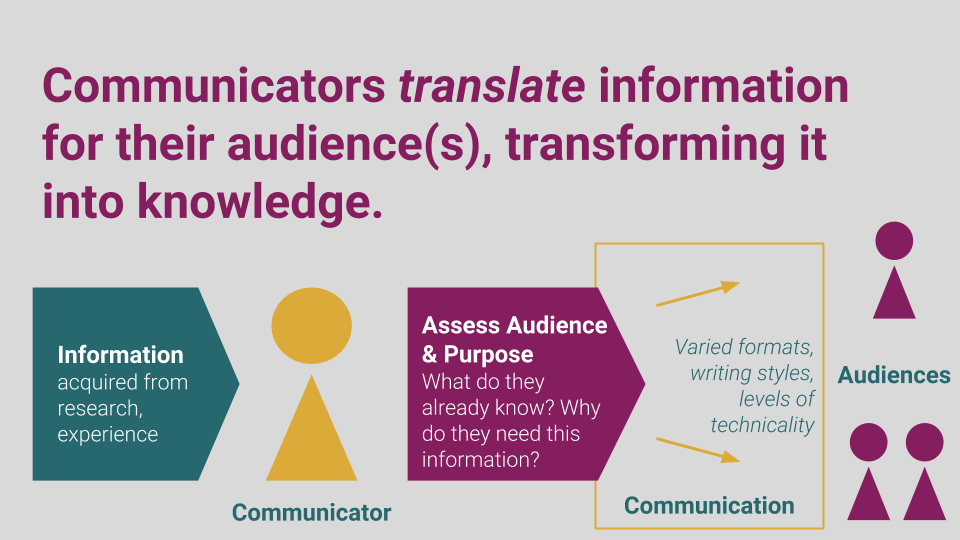2.9 Determining Appropriate Levels of Technicality
As a technical communicator, you may be required to communicate highly technical information from the perspective of a trained expert. But not all of your audiences will share your training and background, so you need to be able to adjust the level of technicality in your writing, while still communicating the information accurately.
A writing style and vocabulary that is overly simplified might bore an expert-level target audience or cause the writer to lose credibility. An overly complex style might overwhelm a target audience of laypersons, causing the writer’s message to get lost and not achieving the purpose of the communication. Technical communicators must ask:
- What level of detail does my audience need for how they will use the information?
- What type of vocabulary will my audience understand and find useful?

The chart below describes some of the ways language and communication might change as you speak to various audiences:
| Audience Type | Language Characteristics |
| Expert Highly skilled, trained practitioner (e.g. fellow engineer); often the audience for Lab Reports, Progress Reports. |
Level of detail: Facts and figures need little explanation; may include formulas and equations; measurements and specifications have a higher degree of precision.
Vocabulary: Acronyms, technical terms, and jargon used; high level of technicality in the language without needing to define words. Examples: |
| Informed Persons Familiar, but perhaps not working directly with the technology (e.g. business side); often the audience for R&D Presentations, client-facing progress reports. |
Level of detail: Technical information is provided, but advanced concepts are explained; application examples or comparison / contrasts often included; might acknowledge audience concerns (e.g. business or financial implications); measurements given, but may be less precise.
Vocabulary: Jargon and technical terms include definitions; acronyms more likely to be spelled out or replaced; vocabulary supports understanding of application rather than technical precision. Examples: |
| Laypersons No professional or specialized knowledge (e.g. a general “public” audience); often the audience for websites, press releases, public relations communications. |
Level of detail: Concise, few specific technical concepts; technically detailed information provided in service of the audience’s needs and goals (e.g. a user manual); measurements provided in common, familiar units.
Vocabulary: Simplified language, avoiding unnecessarily complex terms; new concepts and terms are clearly defined and explained; provides commonly recognizable examples and familiar analogies. Examples: |
CHAPTER ATTRIBUTION INFORMATION"Understanding Your Audience." Fundamentals of Engineering Technical Communications. [License: CC BY-NC] |

